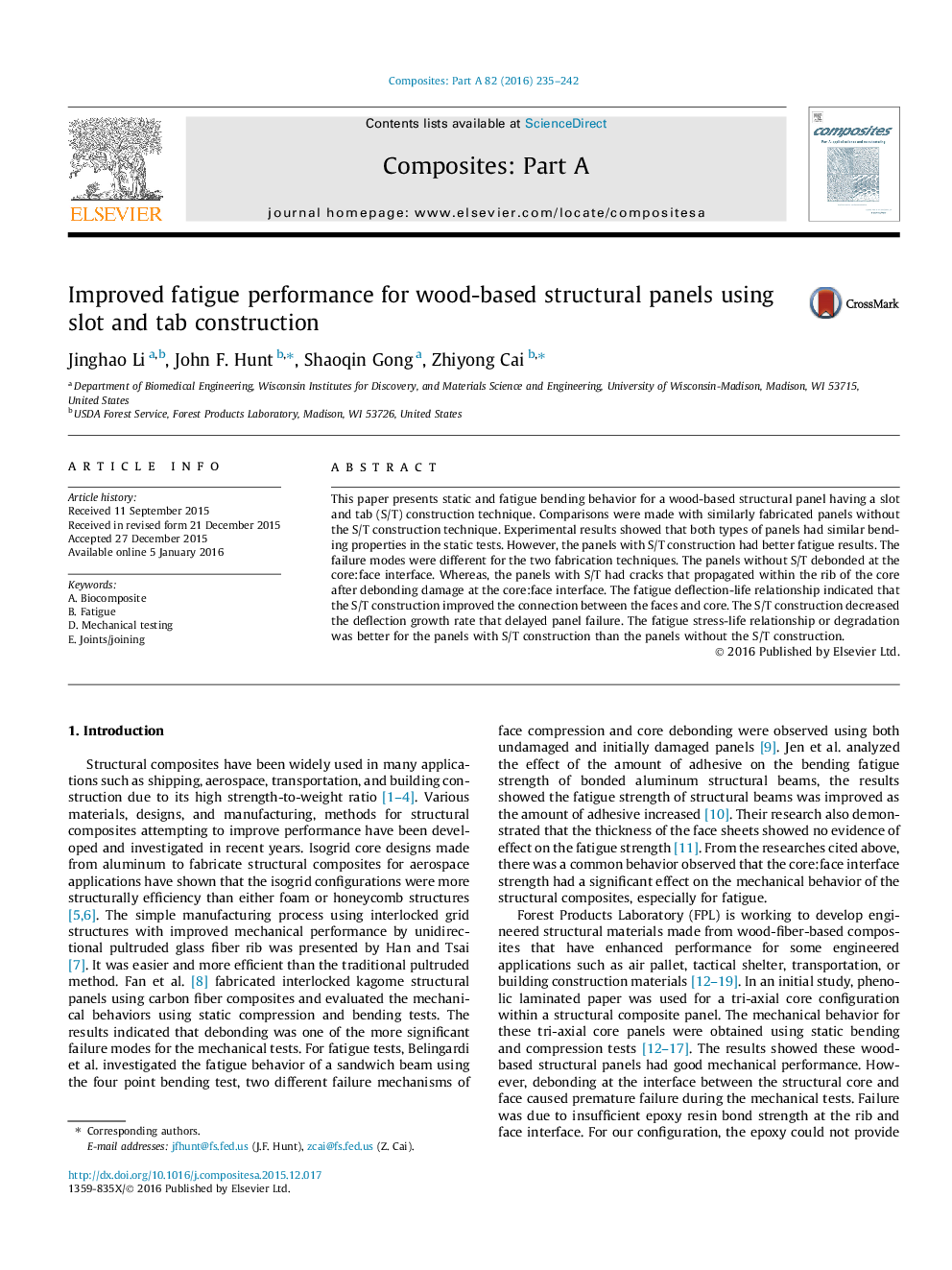| Article ID | Journal | Published Year | Pages | File Type |
|---|---|---|---|---|
| 7891300 | Composites Part A: Applied Science and Manufacturing | 2016 | 8 Pages |
Abstract
This paper presents static and fatigue bending behavior for a wood-based structural panel having a slot and tab (S/T) construction technique. Comparisons were made with similarly fabricated panels without the S/T construction technique. Experimental results showed that both types of panels had similar bending properties in the static tests. However, the panels with S/T construction had better fatigue results. The failure modes were different for the two fabrication techniques. The panels without S/T debonded at the core:face interface. Whereas, the panels with S/T had cracks that propagated within the rib of the core after debonding damage at the core:face interface. The fatigue deflection-life relationship indicated that the S/T construction improved the connection between the faces and core. The S/T construction decreased the deflection growth rate that delayed panel failure. The fatigue stress-life relationship or degradation was better for the panels with S/T construction than the panels without the S/T construction.
Related Topics
Physical Sciences and Engineering
Materials Science
Ceramics and Composites
Authors
Jinghao Li, John F. Hunt, Shaoqin Gong, Zhiyong Cai,
